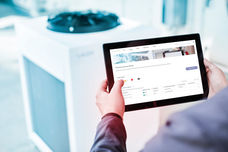European telemedicine vendors adapt to advances in technology
Telemedicine market will generate $236.0 million by 2014
Although the European telemedicine industry has achieved significant progress, certain technological advances have inadvertently led to new hurdles. These include the greater need for standards and physician acceptance of novel telemedicine technologies. Effective telemedicine technology will increase the number of patients that physicians treat remotely and lower the costs and travel times associated with treatment.
New analysis from Frost & Sullivan, SAS Competitive Benchmarking of Telemedicine Vendors in Europe, finds that the European telemedicine market generated revenues of $118.0 million in 2007 and is estimated to reach $236.0 million by 2014.
"While it is apparent that the telemedicine industry is in the midst of great change, it is not clear how the industry will look in the years to come," states Frost & Sullivan Research Analyst Janani Narasimhan. "Technological developments have the potential to not only alleviate the current growing pains but also provide some solutions for the major challenges facing the business of telemedicine delivery."
The industry's technology is becoming increasingly sophisticated and powerful. At the same time, prices for computers, software and transmission equipment are falling.
"New telemedicine networks will be able to take advantage of recent improvements in telecommunications infrastructure and the growth in digital communications," Narasimhan notes. "Up and coming technological advances will have numerous applications in telemedicine."
Many market participants are looking to lower the cost of technologies to widen the deployment of telemedicine, while health organisations are increasingly using telehealth technology to monitor patients remotely. However, the lack of payer reimbursement is a major barrier to broader adoption. Moreover, the technology is believed to be extremely expensive, with questionable returns on investment.
"The high cost of operation has led to the perception among early adopters that telehealth costs must fall to nearly one-third to one-fifth of their present prices before they become widespread and easily accessible," explains Narasimhan.
Governments will be compelled to adopt certain eHealth strategies accompanied by concrete actions, if they wish to keep pace with future demands for healthcare and reduce escalating healthcare costs. As the number of households connected to the Internet grows, the number of web sites/portals dedicated to patients with specific diseases will expand as well. This trend will also increase online communication between doctors and patients, auguring well for market expansion.
Most read news
Other news from the department business & finance
These products might interest you

Get the analytics and lab tech industry in your inbox
By submitting this form you agree that LUMITOS AG will send you the newsletter(s) selected above by email. Your data will not be passed on to third parties. Your data will be stored and processed in accordance with our data protection regulations. LUMITOS may contact you by email for the purpose of advertising or market and opinion surveys. You can revoke your consent at any time without giving reasons to LUMITOS AG, Ernst-Augustin-Str. 2, 12489 Berlin, Germany or by e-mail at revoke@lumitos.com with effect for the future. In addition, each email contains a link to unsubscribe from the corresponding newsletter.


























































